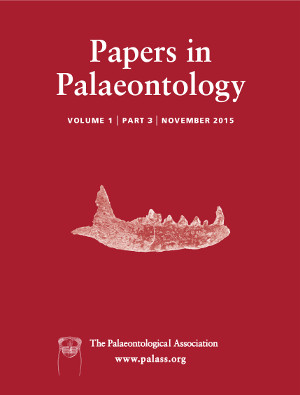Reg. Charity No. 1168330

The well known Middle Devonian (Eifelian–Givetian) lungfish Dipterus valenciennesi from Scotland, UK, has been studied for more than one hundred years though our understanding of the neurocranium and cranial cavity is incomplete. Micro-CT scanning demonstrates that the internal cast of the cranial cavity, the endocast, possesses a mix of primitive and derived characters. The olfactory bulbs are sessile, as in the derived extant Lepidosirenidae. However, Dipterus valenciennesi possesses the primitive condition of a shallow telencephalon unlike Upper Devonian forms such as Rhinodipterus kimberleyensis and extant lungfish taxa. Further information revealed by micro-CT scanning has allowed coding for characters pertaining to the neurocranial cristae, previously unobservable in Dipterus valenciennesi, allowing hypotheses of relationships between Devonian Dipnoi and the position of Dipterus valenciennesi to be reassessed. New analyses do not refine the phylogenetic position of Dipterus valenciennesi but do increase support for most recently established Devonian dipnoan phylogeny. The first record of a three-dimensionally preserved fossilized otoconial mass from the utricular recess in a fossil dipnoan is also described. Comparison of morphometric data of the endosseous and soft tissue manifestations of the labyrinth system in extant dipnoan taxa demonstrates that there is largely good correspondence between the two. When compared to Dipterus valenciennesi, extant taxa exhibit semi-circular canals that are reduced in length. Furthermore, compared to Dipterus, in extant dipnoan taxa the size of the otoconial mass has increased relative to the utricular and sacculolagenar pouches containing them. The functional implications for these observations suggest that the Dipnoi have evolved towards a more sedentary lifestyle and behaviour at least since the Middle Devonian.